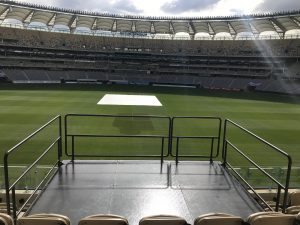
Introduction
Choosing the right stage for your event is crucial to its success. Whether it’s a concert, corporate event, or wedding, the stage sets the tone and ensures everything runs smoothly. In this guide, we’ll explore different types of stages, their benefits, and key considerations to help you make the best choice for your event.
Why the Right Stage Matters
The stage is often the focal point of an event, serving as the platform where the main activities happen. A well-chosen stage enhances the visual appeal, ensures the performers or speakers are seen and heard clearly, and contributes to the overall safety and comfort of everyone involved. From intimate gatherings to large-scale productions, the right stage can make a significant difference.
Types of Stages
1. Modular Stages
Modular stages are versatile and can be configured in various shapes and sizes to suit different events. They are ideal for conferences, trade shows, and exhibitions. These stages can be easily assembled and disassembled, making them a convenient option for events with complex setups.
2. Portable Stages
Portable stages are lightweight and easy to transport, making them perfect for events held at multiple locations or outdoor venues. They offer flexibility in terms of setup and can be adjusted to different heights. Portable stages are often used for community events, school performances, and small concerts.
3. Custom-Built Stages
For events requiring a unique or elaborate stage design, custom-built stages are the way to go. These stages can be tailored to specific themes or branding requirements, providing a distinctive look. Custom-built stages are common in high-profile events like product launches, award ceremonies, and fashion shows.
4. Outdoor Stages
Outdoor stages are designed to withstand the elements and provide a stable platform for performances and presentations in open-air settings. They come with features like weather-resistant materials and anchoring systems to ensure safety. Outdoor stages are popular for festivals, concerts, and public gatherings.
Key Considerations for Choosing a Stage
1. Event Type and Size
The nature and scale of your event will largely determine the type of stage you need. A small corporate seminar might only require a modest platform, while a large music festival would need a robust, expansive stage. Consider the number of performers or speakers, the expected audience size, and the event’s overall format.
2. Venue Specifications
Evaluate the venue’s layout, including dimensions, ceiling height, and access points. Ensure the stage fits comfortably within the space and doesn’t obstruct views or pathways. For outdoor events, consider the terrain and whether the ground is suitable for stage installation.
3. Budget
Your budget will influence the type of stage you can afford. Modular and portable stages tend to be more cost-effective, while custom-built stages can be more expensive due to their bespoke nature. Determine your budget early on and explore options that offer the best value for your investment.
4. Technical Requirements
Consider the technical needs of your event, such as lighting, sound, and audiovisual equipment. Ensure the stage can accommodate these requirements and has provisions for cable management, power supplies, and rigging points. For complex setups, consulting with a professional staging company can be beneficial.
5. Safety and Accessibility
Safety should always be a top priority. Ensure the stage is constructed from high-quality materials and complies with relevant safety standards. Additionally, consider accessibility features such as ramps or lifts for performers and attendees with disabilities.
Enhancing Your Stage Experience
1. Stage Lighting
Effective stage lighting can dramatically enhance the atmosphere and visibility of your event. Use a combination of spotlights, floodlights, and colored lights to create the desired mood and highlight key areas. For dynamic events, consider programmable lighting systems that can change throughout the performance.
2. Sound Systems
A high-quality sound system ensures that your audience hears everything clearly, from speeches to music performances. Work with a professional sound engineer to design a system that covers the entire venue and minimizes feedback or distortion. Wireless microphones and in-ear monitors can also improve the experience for performers.
3. Stage Décor
Adding decorative elements to your stage can make it visually appealing and reinforce the event’s theme. Use backdrops, banners, floral arrangements, or branded materials to personalize the stage. For a cohesive look, coordinate the stage décor with the overall event design.
4. Special Effects
Incorporating special effects like fog machines, pyrotechnics, or confetti cannons can create memorable moments and engage the audience. Ensure any special effects are used safely and comply with local regulations.
Renting Stages
If buying a stage isn’t practical, renting is a great option. Companies like Corpra Hire offer a wide range of stages for different events. Renting allows you to choose the perfect stage without worrying about storage or maintenance. Plus, professionals handle the setup and takedown, saving you time and effort.
Conclusion
Choosing the right stage for your event involves careful consideration of various factors, from the event type and venue specifications to budget and technical requirements. By selecting a stage that meets your needs and enhances the overall experience, you can ensure a successful and memorable event.
For those looking to rent a stage, Corpra Hire provides an array of high-quality options that can be tailored to fit your event’s specific needs. Check out their stages page for more details and to find the perfect match for your next event.
FAQs
1. What size stage do I need for my event? The size of the stage depends on the event type and number of performers or speakers. For example, a small seminar might need a 4×8 foot stage, while a large concert could require a 40×40 foot stage.
2. Can stages be used on any surface? While many stages can be set up on various surfaces, it’s important to ensure the ground is stable and level. Outdoor stages often come with anchoring systems to provide additional stability.
3. How do I maintain a rented stage? When renting a stage, the rental company usually handles maintenance and setup. Ensure the stage is kept clean and free of debris during the event.
4. Are custom-built stages expensive? Custom-built stages can be more expensive due to their unique design and construction requirements. However, they offer a tailored solution that can significantly enhance the event’s visual impact.
5. Can I rent additional equipment along with the stage? Yes, many rental companies offer additional equipment such as lighting, sound systems, and special effects. Renting a complete package can simplify logistics and ensure all components work seamlessly together.
By following these guidelines and considering your specific needs, you can choose the perfect stage that will make your event a memorable success.
